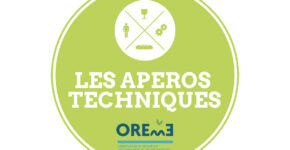
Maison des Sciences de l'Homme SUD - Science and Society United for Alternative Development
Content type : Page
Label: Unité d'Appui et de Research (UAR)Main supervisory bodies: UPVM, CNRS, UMSecondary supervisory bodies: IRD, CIRADResearch cluster: WEBSITE management

"Early childhood: languages, multimodality, plurilingualism".
Content type : Agenda

A l'UM la science [S02-ep14] : From feelings of insecurity to the Eco rendez-vous
Content type: Podcast
Published on: February 02, 2023
This week on A l'UM la science, Marie-Christine Sordino, director of the law team...

"Where is quantum physics hiding in our everyday lives?"
Content type : Agenda

"Overview of methods for managing missing values".
Content type : Agenda

Marie Morille: megastrategic nanoformulation
Content type: Portrait
Researcher at the Charles Gerhardt Institute (ICGM) and lecturer in the galenic pharmacy and biomaterials department at the University of Montpellier, Marie Morille conducts strategic research into the formulation of biotherapies. This has earned her the IUF prize in 2022, after being awarded an ANR junior prize in 2020.

"The microbiota-gut-brain axis and its role in psychiatric disorders"
Content type : Agenda

A l'UM la science [S02-ep13]: From the resilience of teeth to the Hummingbird
Content type: Podcast
Published on: January 26, 2023
This week in A l'UM la science Alban Desoutter and Frédéric Cuisinier from LBN talk about...


23rd Water Seminar
Content type : Agenda

A l'UM la science [S02-ep12]: From COP 15 to the Science Bar
Content type: Podcast
Published on: January 19, 2023
This week on A l'UM la science, Anaëlle Durfort, a PhD student at Marbec, and Marie-Morgane...

The UM meets its future students
Content type : Article
Published on: January 18, 2023
For its 33rd edition, the higher education fair took place at the Parc des...

"Sleep disorders, a real nightmare".
Content type : Agenda

"Energy transition: what citizens can do".
Content type : Agenda

[Take-off #5] Setting up a project in the regions
Content type : Article,
Video
Published on: January 17, 2023
Benoît Bardy is a researcher in the Euromov digital health in motion laboratory. He has...

OSU OREME technical aperitif "Low-tech: concepts and implementation".
Content type : Agenda